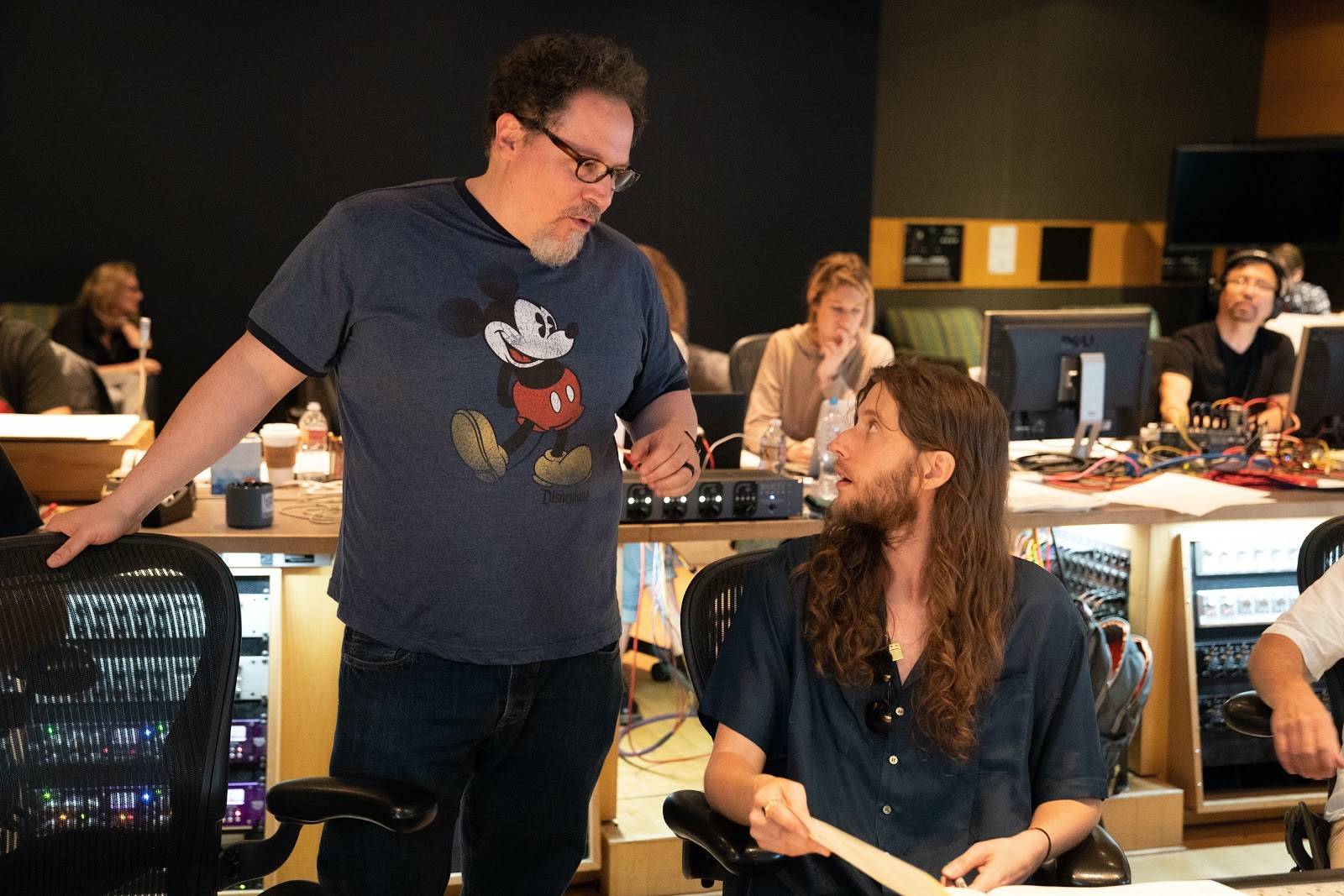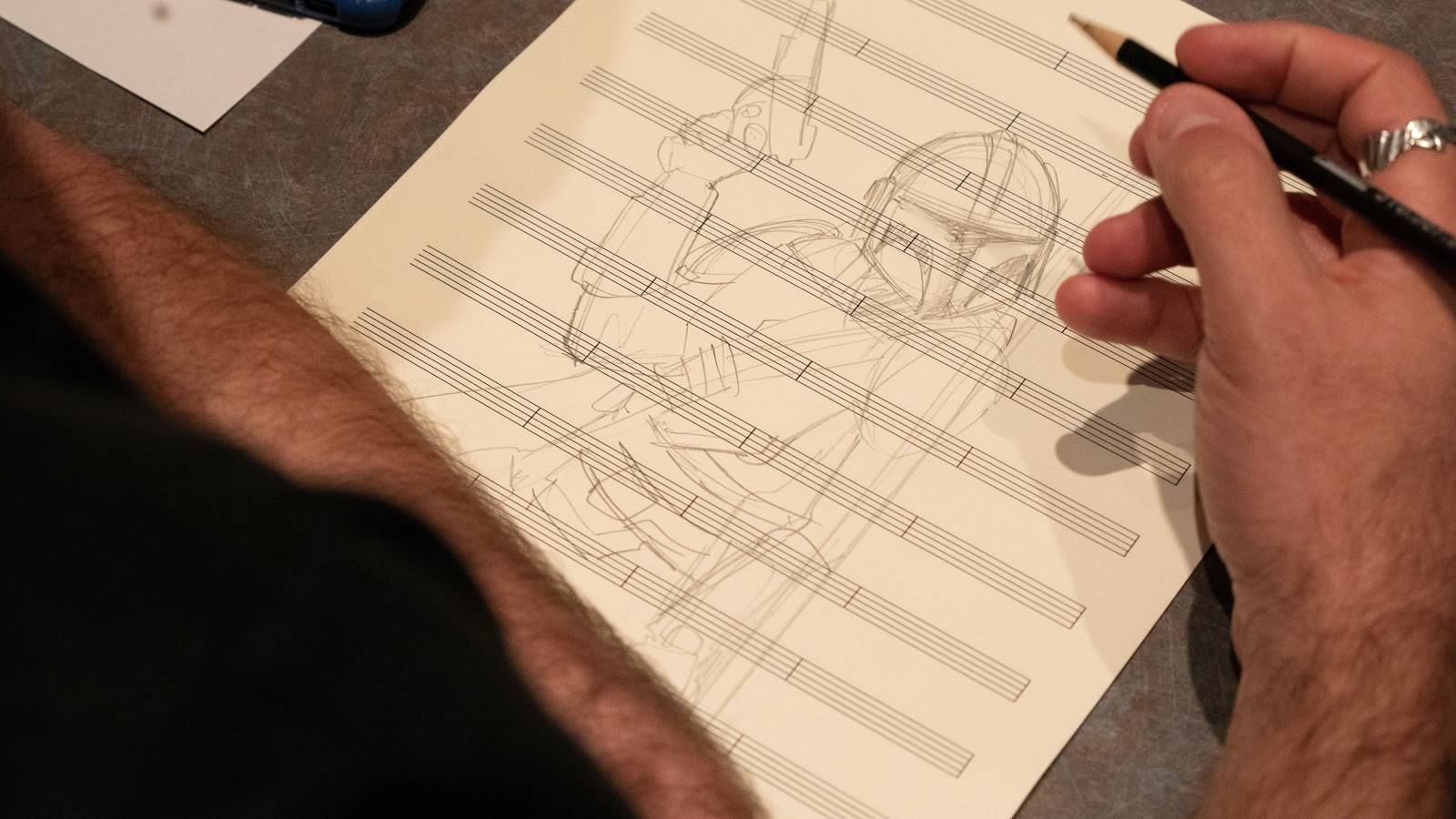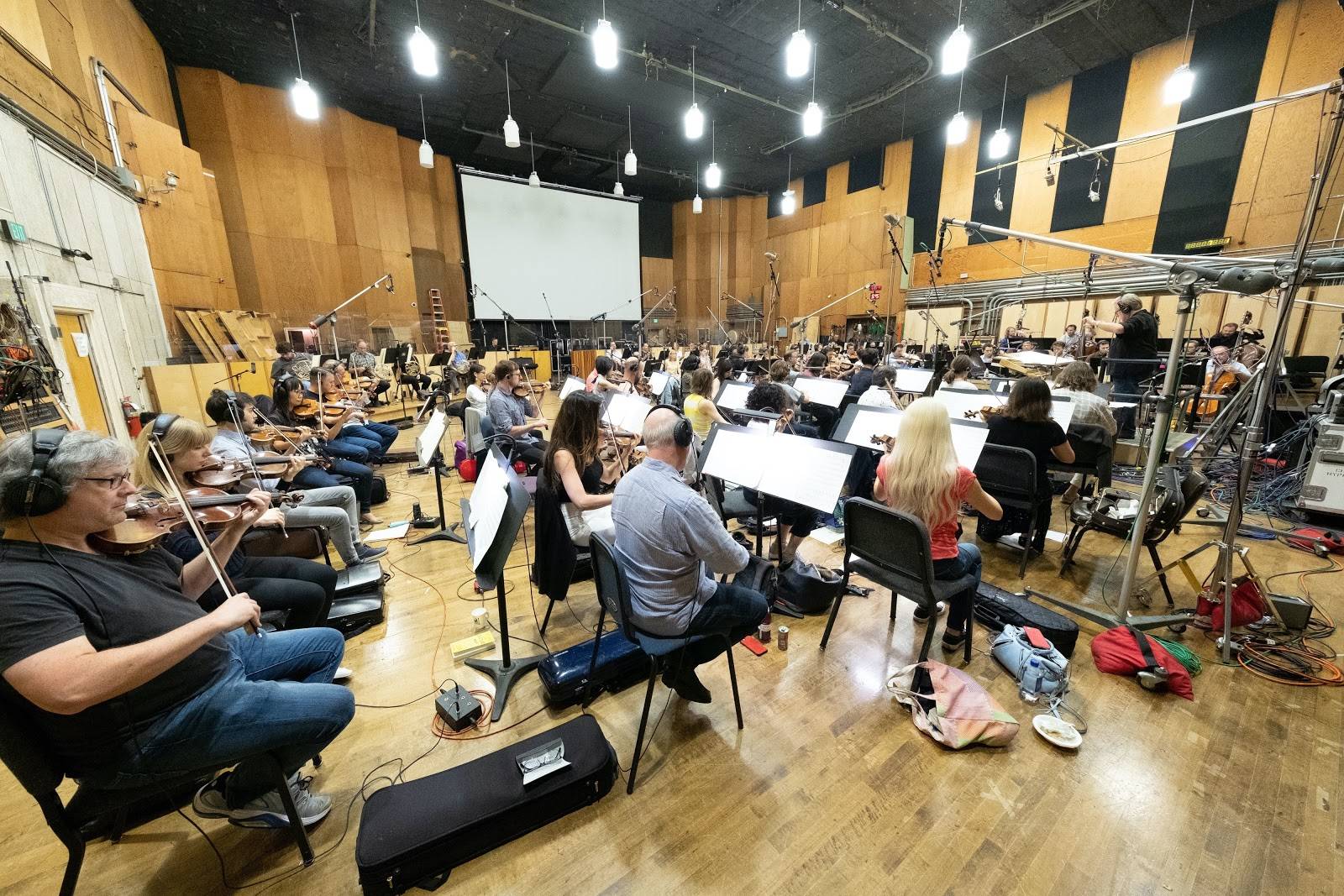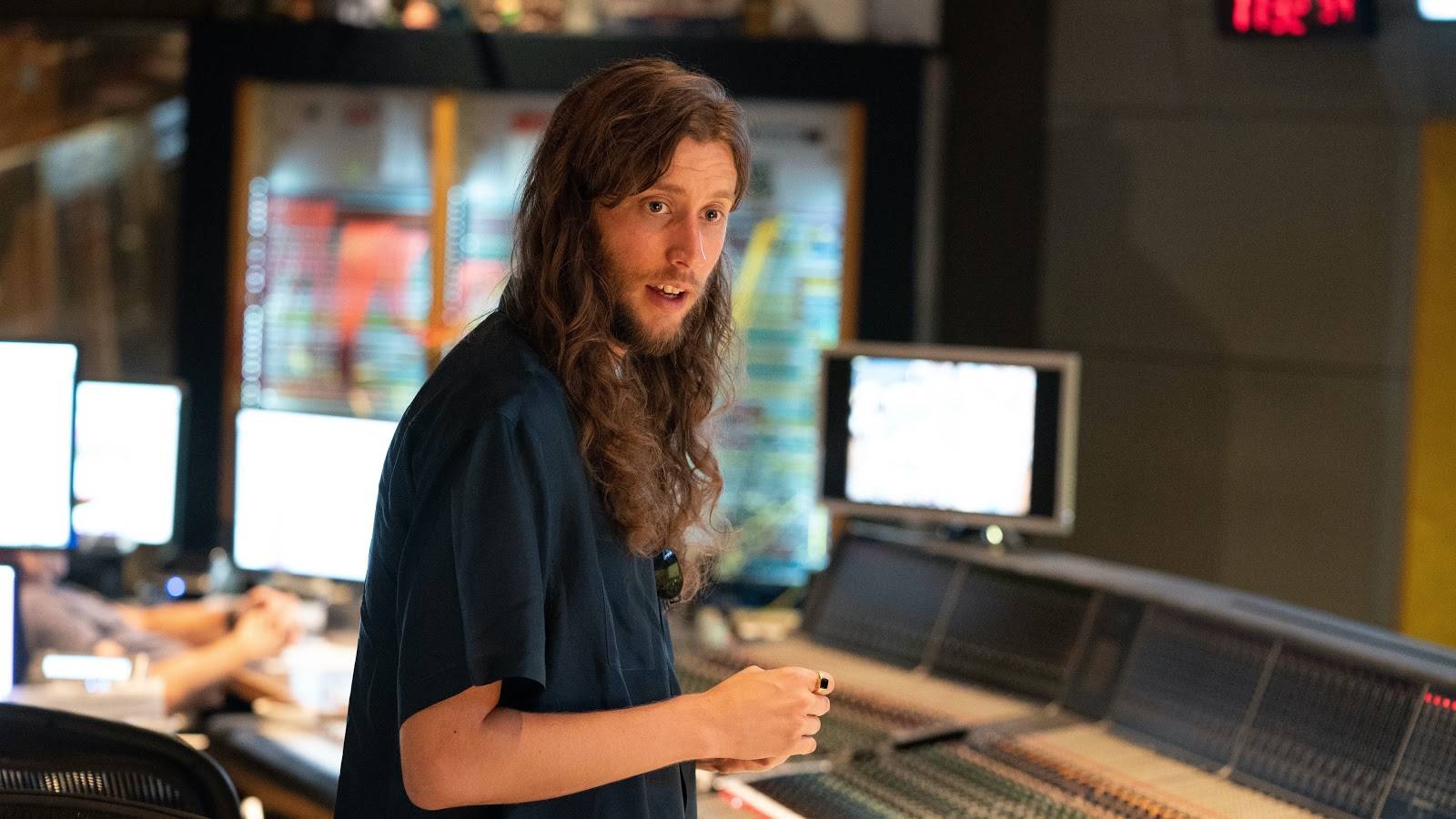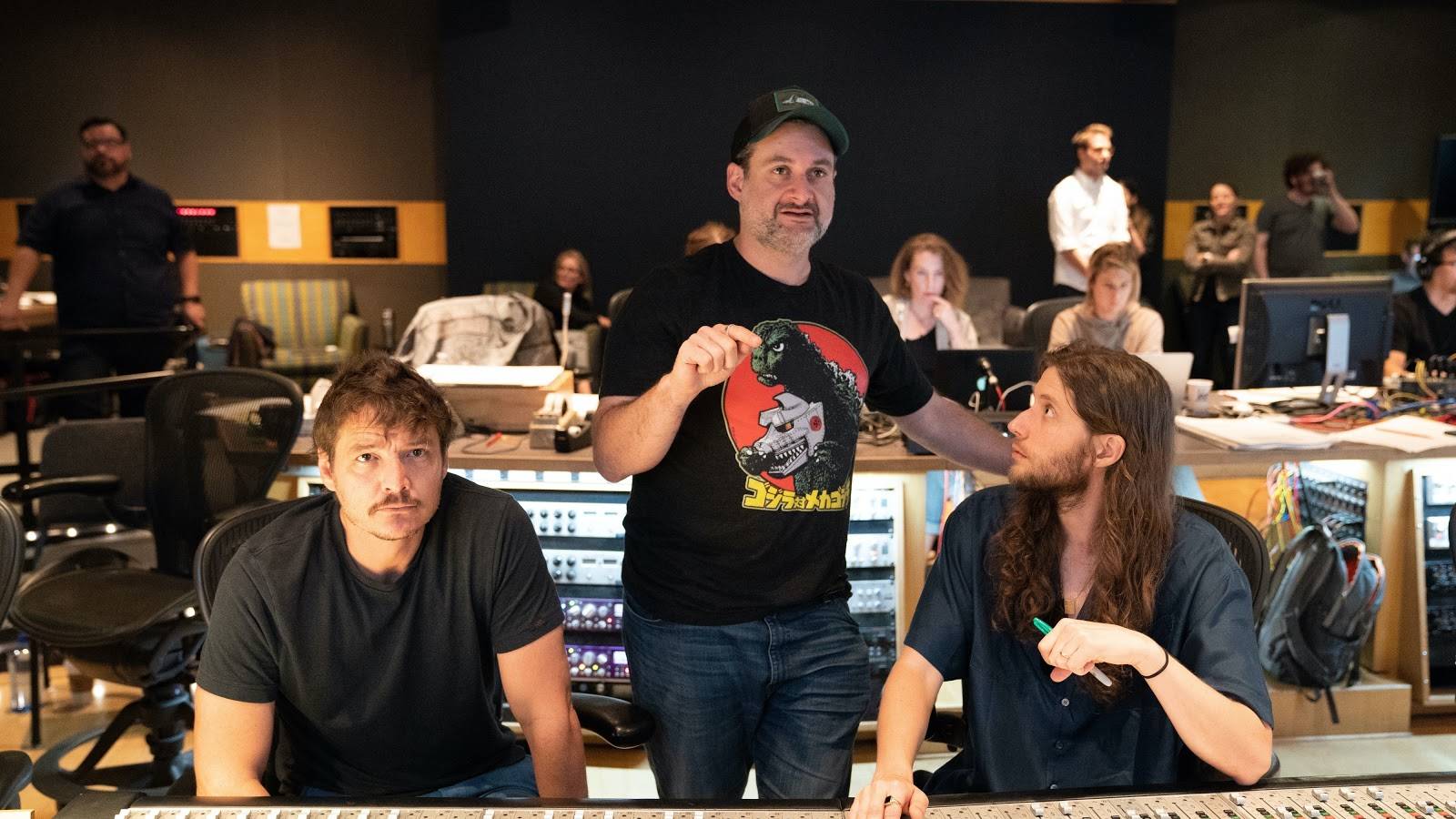Hello and welcome to Laughing Place’s weekly recap of the behind-the-scenes docuseries Disney Gallery: The Mandalorian on Disney+. This week’s new episode represents the series’ penultimate installment and focuses exclusively on the creator of the acclaimed musical score for The Mandalorian by multi-talented composer Ludwig Göransson. In the bullet-point list below I’ve gone through the episode and selected the most fascinating tidbits and factoids we learned during this very interesting half hour.
- One of the first things Ludwig Göransson did when he started scoring The Mandalorian was order a kit of recorders through the mail, some of which he hadn’t played before. He then read the scripts for the series and closed himself off in his studio for a month with his instruments and no computers.
- After the flute, he added drums, piano, and guitar to help flesh out the music.
- Göransson was recommended to The Mandalorian creator and showrunner Jon Favreau by Black Panther director Ryan Coogler (Göransson’s roommate at USC) and The Lion King star Donald Glover.
- In addition to composing music for films, Göransson also collaborates with hip-hop artists and appeared as himself in the 2013 Childish Gambino short “Clapping for the Wrong Reasons.”
- Favreau and executive producer Dave Filoni wanted to bring a dystopian twist to The Mandalorian’s score on top of the established Star Wars sound.
- As reference points, Göransson was given famed Spaghetti Western composer Ennio Morricone and the non-traditional scores for Japanese director Akira Kurosawa’s films, as Favreau described The Mandalorian as a samurai / western show.
- Favreau and Filoni also told Göransson to “have fun with it,” but they say they wouldn’t have said that if they didn’t already like what he was doing.
- Göransson used a rare 1970s guitar synthesizer called the Roland GR-500.
- He felt his job was to show Mando’s emotions through the music because the viewer can’t see them on his face.
- Göransson also served as producer for the show’s music and used digital tools to shape the sound.
- Göransson visited the set of The Mandalorian during production and played Favreau, Filoni, and director Bryce Dallas Howard five themes from his proposal for the score. They immediately loved his work.
- “You can’t do music for Star Wars without working on something that looks like a robot,” Göransson says about his very complicated-looking mixing board wall. He uses this to create a variety of sounds for his score.
- He also used a full orchestra to honor Star Wars tradition and provide a more traditional sound on top of his more experimental music.
- Göransson’s wife– who was pregnant with their unborn child at the time– served as concertmaster for the show’s recording sessions.
- Favreau says the musical score is the “lightning rod” for Star Wars because it’s the one thing all the fans can agree on. At the same time, he didn’t want to use familiar themes “as a shortcut to get through to the audience.”
- Göransson says working on the scoring stage with the orchestra is the best part of his job, because up until that point he’s mostly working by himself.
- He says composing the score for eight episodes of this series was like doing three feature films.
- He wanted the score to have a main throughline throughout the entire series to tie it all together, but also give each individual episode its own unique theme.
- Filoni gives another speech about how George Lucas built Star Wars from nothing and ties it into the discussion about the score by saying how they needed to take a chance with the music rather than repeat things that John Williams had already done.
- Göransson says he was first introduced to Star Wars through the music and that Williams’ scores also introduced him to classical music in general.
The final episode of Disney Gallery: The Mandalorian will be released next Friday, June 19 exclusively on Disney+.
Sign up for Disney+ or the Disney Streaming Bundle (Disney+, ESPN+, and ad-supported Hulu) now

